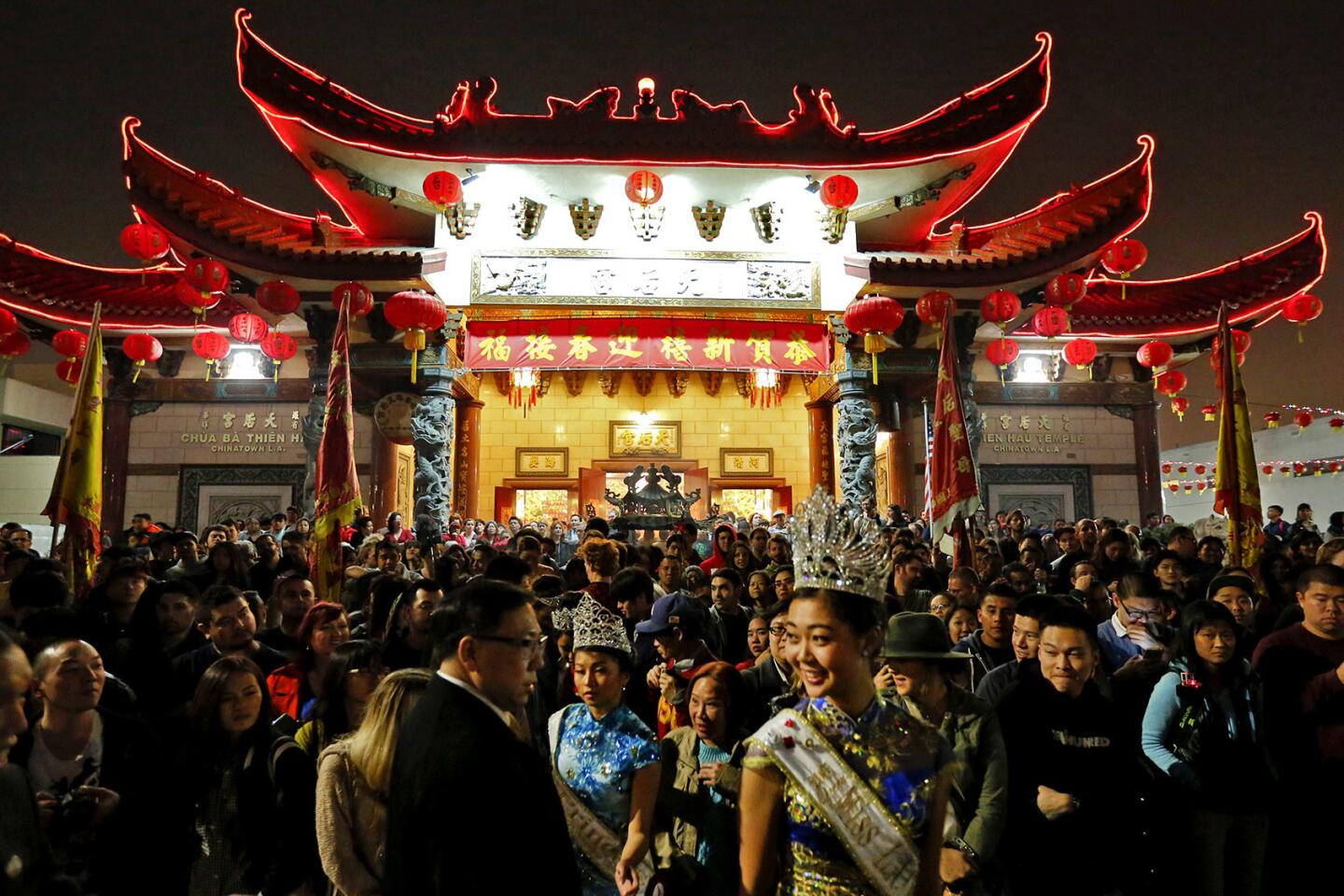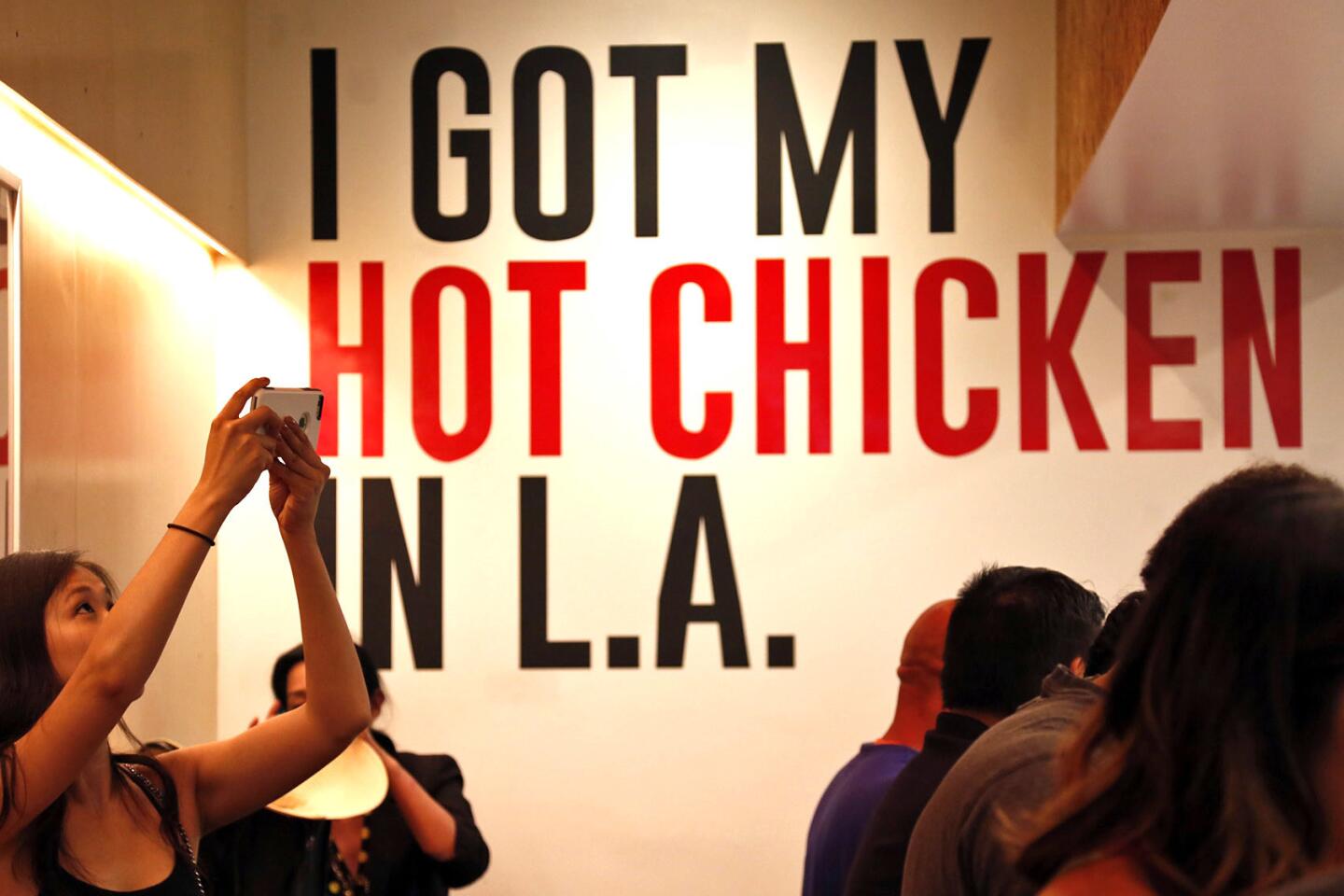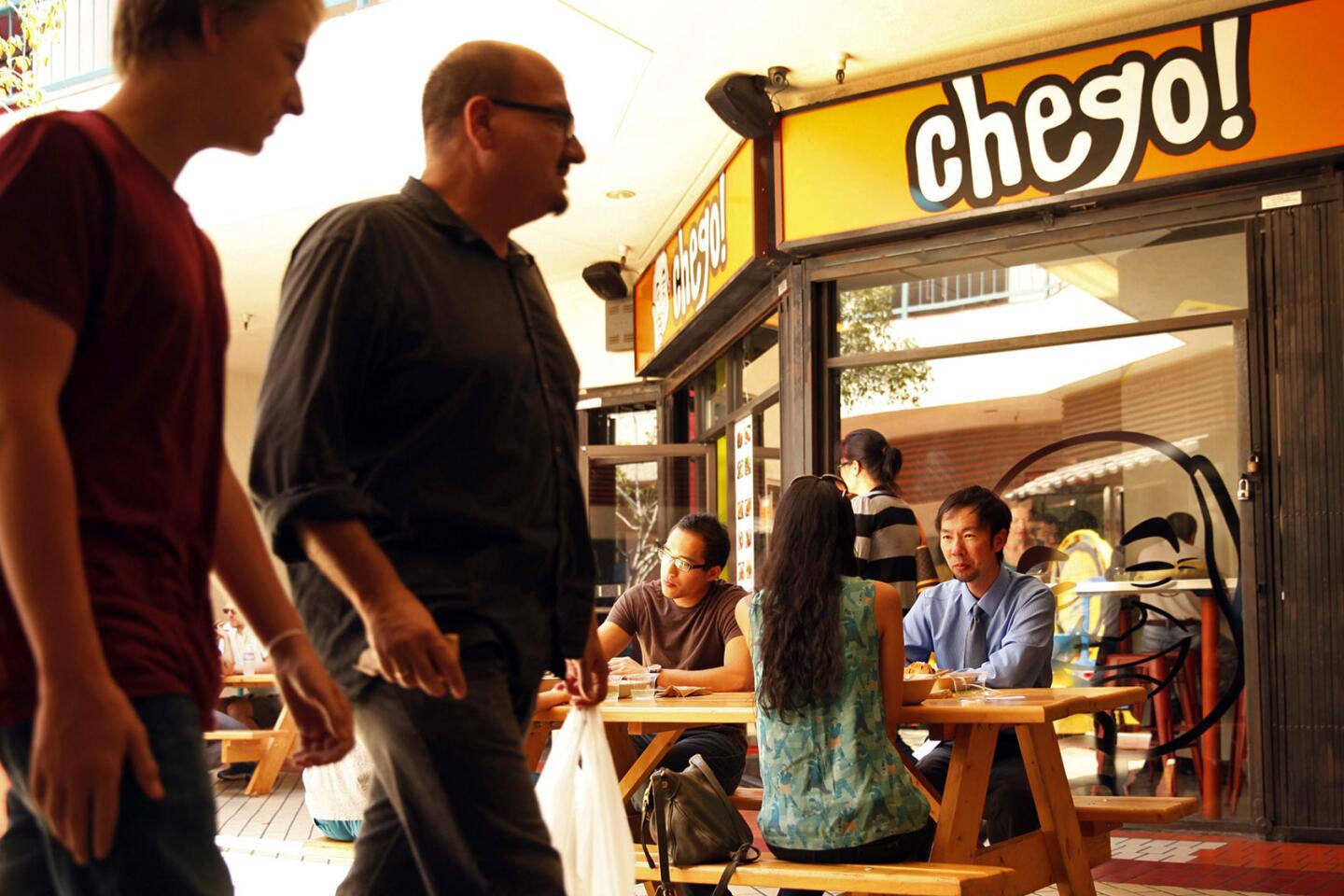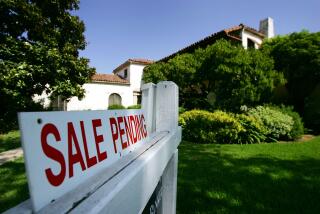Neighborhood Spotlight: Chinatown again rolls with the punches, capitalizing on change
- Share via
The long, storied history of the Chinese in Los Angeles began in 1850, when the census recorded two Chinese residents of the city.
They were part of a wave of Chinese immigrants drawn to California by the twin siren calls of the Gold Rush and plentiful construction jobs on the transcontinental railroad. They found ready work across California.
In L.A., these new Americans began to settle in the area between the Los Angeles River and the Plaza.
With the end of construction of the railroad, a nativist backlash resulted in a restriction against any Chinese working as wage laborers, a restriction that they promptly turned into an opportunity to achieve success through entrepreneurial pursuits.
Soon Old Chinatown was a thriving neighborhood, complete with a Chinese opera and no fewer than three temples. In 1880, however, growing xenophobic sentiment reached its apotheosis with the Exclusion Act, which barred further Chinese immigration.
The act, in conjunction with prohibitions against the ownership of property by anyone of Chinese ancestry, set in motion the slow economic decline of Old Chinatown, a process that accelerated in the 1930s with the decision to raze the heart of the neighborhood to make way for Union Station.
L.A.’s Chinese community, in an effort led by Peter SooHoo, began to search for a site to build a new, modern Chinatown. It found one just north of downtown, on Santa Fe Railroad land in what had historically been Little Italy.
To prevent the kind of dislocation that had forced them from their original neighborhood, they formed the Los Angeles Chinatown Project Assn., a development group that would allow them to control their own destiny moving forward.
Working to create a recognizably Chinese cultural experience that would appeal to locals and tourists alike, the association re-envisioned Chinatown as a mixed-use residential and retail complex. Buildings were constructed to the most modern earthquake codes, the streets were wide and airy, and traditional Chinese architecture, as filtered through the popular American imagination, was foregrounded.
As innovative as New Chinatown was, its reign as the center of Chinese American life in Los Angeles was short. The end of the Exclusion Act during World War II and the relaxation of racial covenants allowed Chinese Angelenos to join the postwar exodus to the suburbs, with many making their new homes in San Gabriel Valley.
Today, Chinatown is on an upswing. New apartment buildings and retail outlets are going in; it has its own Metro rail station; and the Los Angeles State Historic Park will finally open later this month.
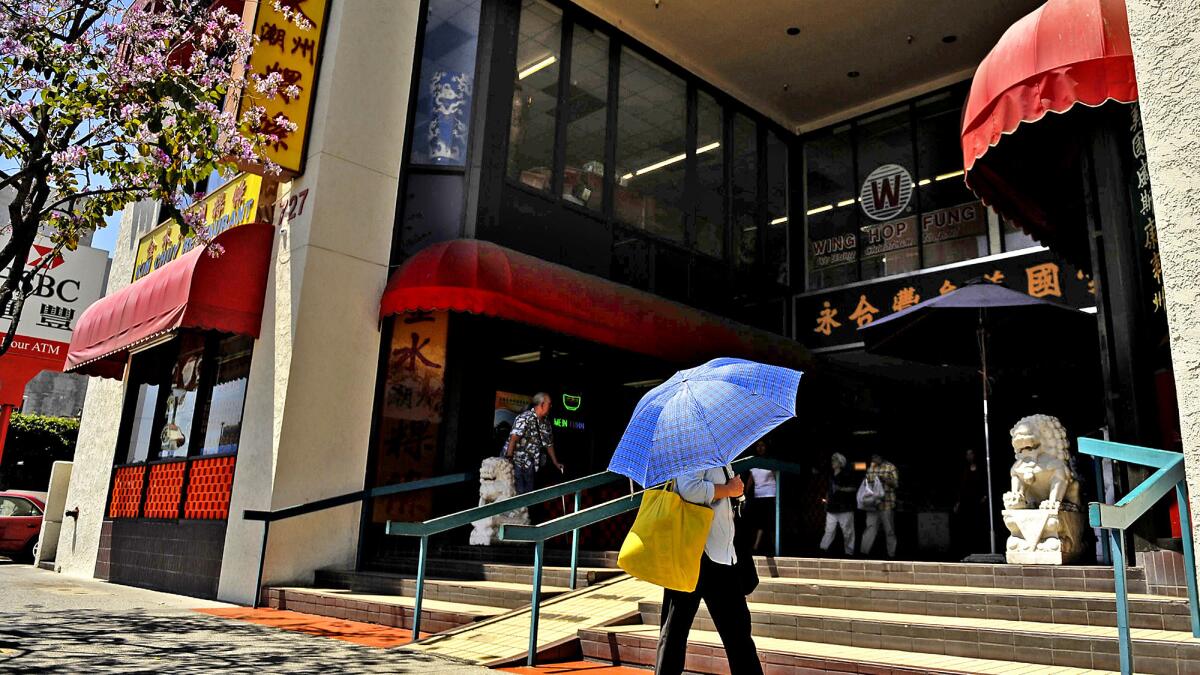
Far East Plaza.
Neighborhood highlights:
Cuisine scene: In the last few years, Chinatown has emerged as one of the city’s most exciting hipster food havens, especially if you’re on a budget. Although Pok Pok Phat Thai is no more, there are still Howlin’ Rays (if you can stand the line), Chego, Lao Tao and more at the Far East Plaza alone.
Old meets new: The original plaza is still standing and as popular as ever, and it’s now being complemented by new residential development across the neighborhood.
A layered history: Three historical timelines — the Italian and Chinese immigrant experiences, and the early history of L.A. itself — come together in Chinatown.
Neighborhood challenges:
Keeping it real: Chinatown is touristy, sure, but it’s always been grittily true to itself. Keeping new development from polishing away its interesting edges will be a challenge.
Expert insight:
With the rapid rise of downtown L.A., neighboring communities are benefiting from the spillover, said Johnny Choi, a senior associate who does retail investments and leasing at CBRE.
“Chinatown is really in the path of growth,” he said. “When it comes to commercial and residential, people are very sensitive in terms of rent, and I think everyone’s kind of moving outwards of downtown because downtown is getting so expensive.”
Choi noted that for residents of Chinatown, “downtown L.A. is almost like an amenity to them — it’s, like, five minutes away.”
Market snapshot:
Portions of the 90012, 90031 and 90033 ZIP Codes overlap the Chinatown area.
In February, based on three sales, the median sales price for condominiums in the 90012 was $430,000, according to CoreLogic. In the 90031 ZIP, the median sales price for condominiums, based on four sales, was $376,000, and for single-family homes, the median price was $508,000 based on four sales. In the 90033, there was one home sale of $750,000 for that month.
Report card:
Within the boundaries of Chinatown are Castelar Street Elementary and Endeavor College Preparatory Charter, which scored 874 and 870, respectively, in the 2013 Academic Performance Index.
Nearby schools include Albion Street Elementary, which had a score of 811, and Betty Plasencia Elementary, which scored 786. Ramon C. Cortines School of Visual and Performing Arts scored 737, and School for the Visual arts and Humanities had a score of 685.
MORE FROM HOT PROPERTY
La Cañada Flintridge manor ought to be in pictures — and it is
‘Dog Whisperer’ Cesar Millan finds a new leash on life in Encino
New Laker Corey Brewer snaps up a short-term spot in Manhattan Beach
More to Read
Sign up for Essential California
The most important California stories and recommendations in your inbox every morning.
You may occasionally receive promotional content from the Los Angeles Times.
